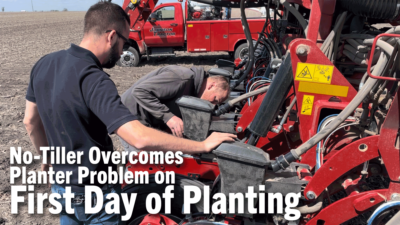I’ll have to say it’s a little bit of a relief to see what happened last week when more than 500 scientists, academic experts, farmers and government officials from more than 100 countries convened the Global Symposium on Soil Erosion at the Food and Agriculture Organization (FAO) headquarters.
The 3 days of discussion focused on how policy and scientific evidence can be translated into concrete actions to reduce soil erosion and move towards food security and the achievement of sustainable development goals (SDGs). In 20 sessions there were more than 100 presentations, including one from an astronaut who described how soil erosion could be seen from space.
I’m still combing through some of the videos and webcasts from this event. But one thing that stood out to me is when organizers noted, “the equivalent of one soccer pitch of soil is eroded every 5 seconds, and the planet is on a path that could lead to the degradation of more than 90% of all the Earth’s soils by 2050.”
To me, “2050” is truly a shocking statement. That is only 30 years of crops, and just 30 more chances to get this right. How did we get here?
When opening the symposium — which focused on enhancing how the world measures and manages soil erosion and its economic costs — FAO deputy director-general Maria Helena Semedo noted the wheel doesn’t need to be reinvented.
“We have solutions,” Semedo said. “Preventing soil erosion through education, advocacy and concrete actions in the field are the best way to maintain healthy soils,” she says.
Planned outcomes of the symposium were to be identification of "global hotspots" warranting priority actions in soil management; a database on the best erosion-control practices, and more consensus on how to carry out cost-benefit analyses of prospective interventions to prevent, remediate and mitigate soil erosion.
One key takeaway offered by FAO is that farmers are part of the solution and should be supported, which could be achieved through targeted incentives, education and awareness-raising.
While it’s encouraging to see this dialogue worldwide among countries, I think it’s up to the United Nations and FAO to start holding countries more accountable for moving the needle on protecting their soil resource.
It’s easy to have symposiums and set goals, but what is going to happen to the governments of countries that do nothing? Perhaps foreign aid to some countries should be tied to reasonable progress on protecting soils and abandoning slash-and-burn agriculture. Incentives have great promise, but the question in poorer countries is who will pay for them.
Another problem, in my opinion, is that many well-meaning experts constantly tie the need for protecting soils to the term “climate change.” The issues that affect our planet’s climate are very complex and somewhat controversial among farmers, as they often feel they’re unfairly being singled out.
Farmers need to be convinced there’s a better way to raise crops and that comes through proper messaging. No-till acreage in the U.S. has advanced from a few million acres in the 1970s to 104 million acres in 2017 because farmers could slow or stop erosion, reduce their capital outlay and input expenses and improve the bottom line.
Our world’s leaders should use this symposium to build momentum toward devising incentives and possible penalties that will convince countries to act. We already know what the solutions are to save our soil.







Post a comment
Report Abusive Comment